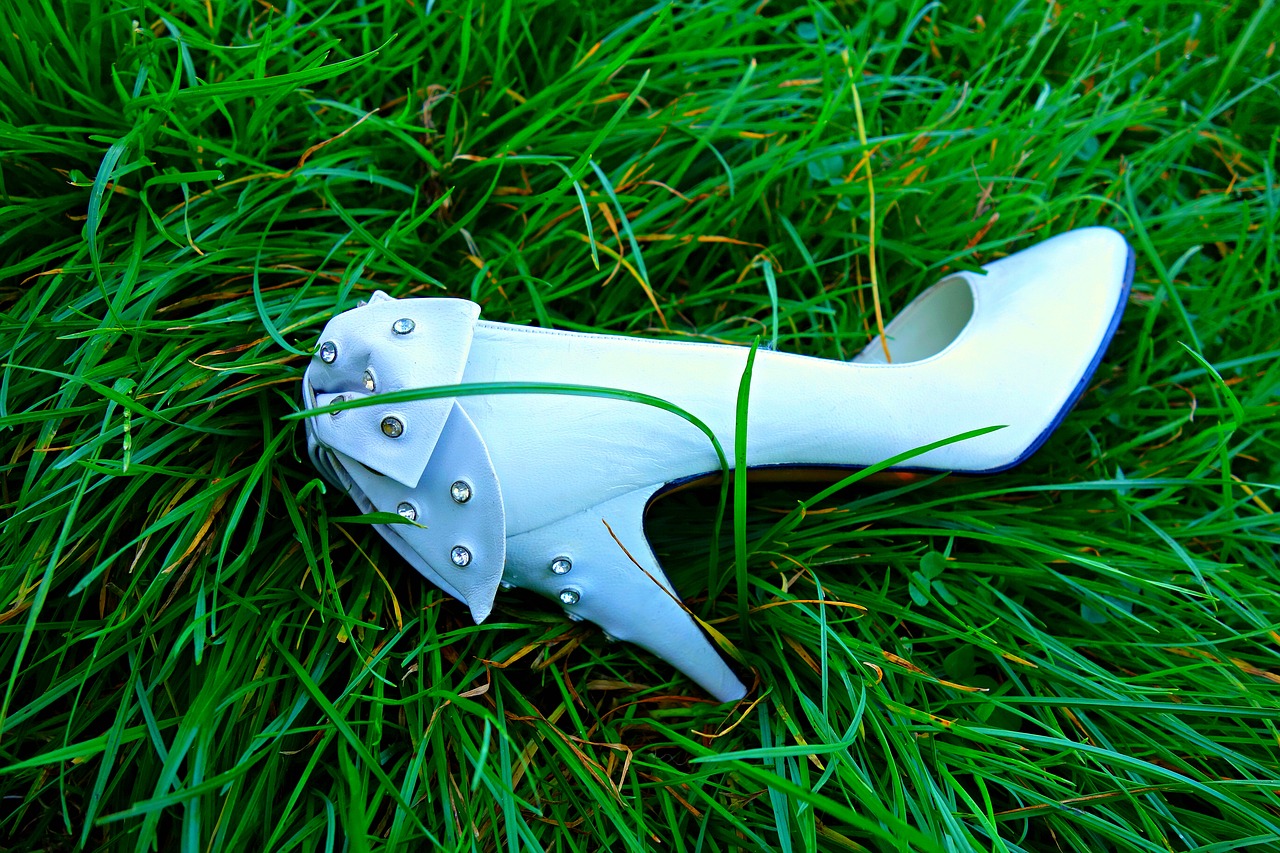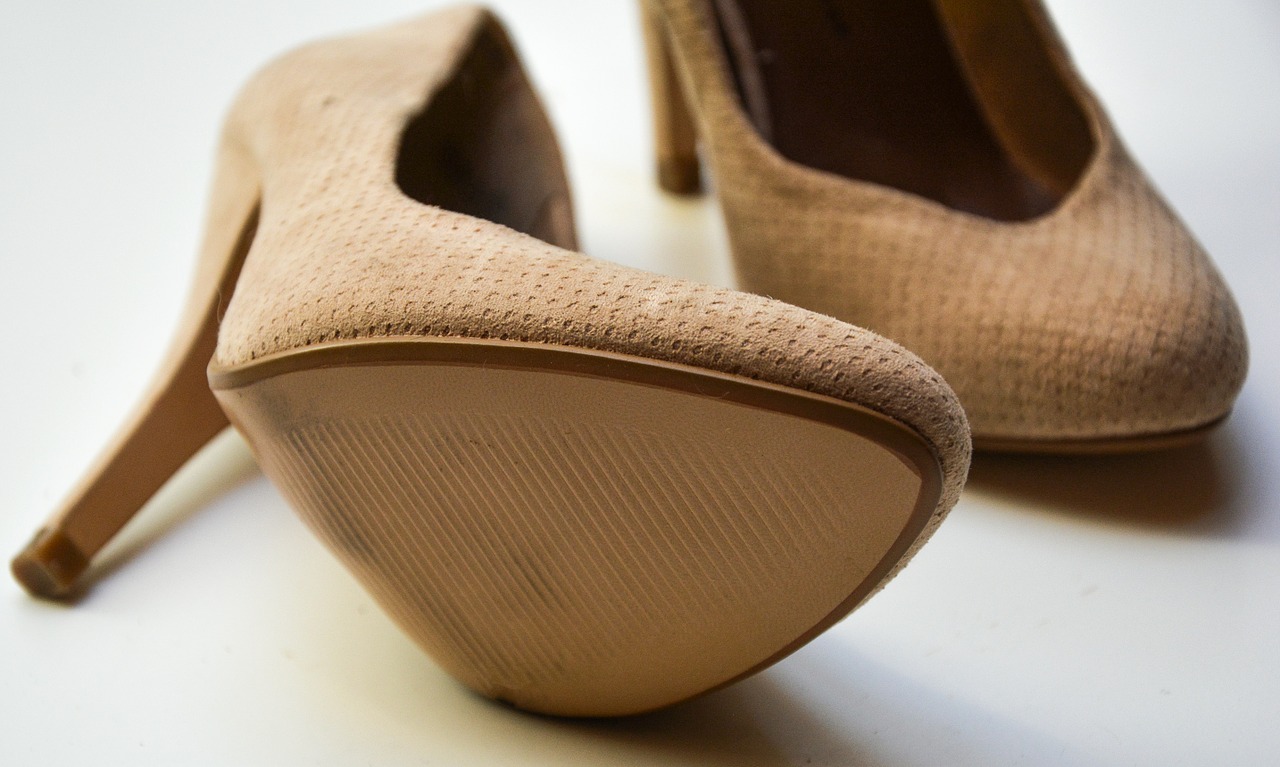It shouldn’t come as a shock that teetering around on tip-toes for hours on end isn’t how your foot is supposed to function, but there are still people who are surprised to hear it.
High heels are bad for you. They’re not just “less functional than sneakers” or “less comfortable than flats,” they actively harm your body, from the bottom of your feet to the top of your spine. Wearing them is bad for you, not wearing them is good for you. Here are just some of the problems they’ve been linked to.
Listen to the Experts
“High heels in general are an unnatural way to walk, we weren’t meant to walk on our tippy toes,” says Dr. Neal Blitz, DPM, FACFAS, a foot surgeon based in New York and Los Angeles who is board certified in both foot surgery and reconstructive rearfoot and ankle surgery. “That’s what high heels do, they put women — I mean we’re talking about women, mostly — on their tippy toes, and what that does is put excessive force on the ball of the foot. In the short term, because the foot is in this altered state and not functioning properly, you wind up getting a lot of muscle activation in the intrinsic muscles inside the foot which can lead to muscle spasms, cramping, and acute pain.”
Unsurprisingly, high heels are far and away the most common cause of foot pain, and one study estimated that almost 125,000 women in the U.S. were treated for high heel-related injuries between 2002 and 2012. Most injuries were to the ankle or foot, but more than fifteen percent involved the knee, torso, shoulder, head, and neck. Many were strains or sprains, but fractures made up nineteen percent of all injuries.
But those are just the short-term problems. In the medium- to long-term, high heels can cause bunions, hammer toes, stress fractures, and metatarsalgia, a condition in which the ball of your foot becomes painful and inflamed. The abnormal pressure on the ball of the foot can also lead to calluses and corns, which are particularly detrimental for athletic performance.
“High heels are notorious for bunions,” says Dr. Blitz, who has patented his own device for bunion surgeries. “I see a lot of athletes who wear heels by night and sneakers by day, and they struggle. They start developing bunions, it interferes with their ability to run, and even in weightlifting it plays a role because a bunion will make the foot less stable.”
The same thing goes for hammer toes, a deformity that causes your toe to bend or curl downward instead of pointing forward. More than 200,000 cases of hammer toe are reported in the U.S. each year, and it’s a condition that’s usually caused by restrictive footwear.
Beyond the Foot
That’s just the foot we’re talking about. High heels can also cause the Achilles (the strongest and largest tendon in the body) and the calf muscles to tighten and shorten over time. That can lead to additional problems like impaired ankle mobility and a higher risk of sprains and and strains, as well as the aforementioned foot problems.
But let’s go further north.
Think of what high heels do: they give you some height in the heel, engaging the calf muscle and forcing you to contract it, giving the “shapely” leg that they’re meant to.
“But it also pitches the body forward, and to compensate you extend the lumbar spine, pushing out the buttocks and chest in a posterior tilt,” says Dr. Adam Lipson, a New York City-based neurosurgeon who specializes in spinal surgery.
By pitching you forward it affects your spinal balance, forcing you to make active corrections to keep yourself balanced and your head centered over the pelvis. The compensations that people make to maintain that balance require active contraction of the back extensor muscles, the hip flexors, and the abdominal muscles, and there’s some data that the height of the heel affects the curve in the thoracic spine. It also tends to put the head in a more forward position, which can strain the neck over time.
“When the heels pitch you forward, you adjust the balance of the spine and you need active muscle contraction to stay centered, and some women think that works,” says Dr. Lipson. “But a couple of things happen: one is as you get older, your pelvis becomes tilted forward from all the active contraction on the muscle. The second thing is that it can expose the discs of the spine to an increased amount of stress. You can wear heels whenever you want, but understand there’s a relationship between the height of the heel and back pain.”
https://www.instagram.com/p/vHJ7QfzPoB/
What About Weightlifting Shoes?
A raised heel can be useful for Olympic weightlifting shoes because it enhances one’s ability to maintain proper posture throughout lifts and can help compensate for limited ankle mobility.
But there are huge differences, namely that the base of support is much larger and more stable (you’re not perched on a heel the size of a dime) and the heel of a weightlifting shoe seldom exceeds 0.75 inches. Most high heels in the U.S. are between two and three inches high, and stilettos reach five or even six inches in height.
So How Often Can I Wear High Heels?
We get it, you still want to wear high heels. No article will convince everybody to throw out their zillion-dollar agony shoes, but there are some steps you can take to minimize the damage.
The first tip that both doctors provided is the most obvious: if you don’t want to stop wearing high heels, wear them less.
“I‘d advise no more than two days a week of very high heels, by which I mean more than three inches,” says Dr. Lipson. “Two days a week in medium heels, and three days with flats or sneakers. Cycling your higher heels with your lower heels is appropriate, so you’re not constantly exposed to higher heel height.”
https://www.instagram.com/p/BSCQ-32gGxO
Dr. Blitz likens wearing heels to an athlete’s “cheat days” — they’ll happen, and if it’s only now and then it’s not as big a problem as throwing caution to the wind every day. But he cautions that for athletes, they should be mindful of their tolerance level.
“If you’re not used to wearing high heels and you go out in them and party all night, you’re going to have what I call the high heel hangover,” he says. “Your foot’s going to be swollen, you’ might have tendonitis, the strain, and the corns, and the cuts, and the calluses. The average woman might take a Tylenol, soak their feet and suck it up. But for an athlete it affects their ability to run and lift, so sometimes the pain is not worth the gain.”
Basically, it depends on the wearer, but try and spend most of the week with your heels on the ground, particularly if you have a competition or a lifting meet coming up.
https://www.instagram.com/p/BSPIJVtDsFM
The realization that high heels can negatively impact performance may come as a surprise to some athletes. After reading this article, CrossFit Level 1 Trainer and blogger Nadeen Rayan had this to say: “I never really saw the importance and effects of high heels until I read this article, it was very interesting to read the complications that could be caused by wearing them. Most of the time we’re not looking at the long term effects of something and I guess this is one part of the many things that affects our physical health. Being a lifter myself, I am very glad that I walk everywhere and spend most of my days in my sneakers or gym shoes otherwise I would probably be suffering from one of the side effects mentioned, because let’s face it, I’m a woman and I like my high heels, all the more reason to save them for a super special occasion ;).”
What Else Can I Do?
“I know BarBend is catered to a high level of performance and strength, but to be honest, those concepts of strength training apply to everyone,” says Dr. Lipson.
For many of his patients, he advises against running and directs them toward strength training to help the body withstand the pressures exerted by high heels.
“I’m a big fan of planks for core strength, also leg lifts and knee raises,” he says. “Squats and lunges are great, too. All that training is as essential for your average person walking down the street as they are for the highly conditioned athlete. “
For folks who don’t have a particularly high degree of strength, Dr. Lipson usually starts by recommending a Pilates program with an emphasis on core strength over a yoga program with an emphasis on flexibility.
“Strength is more important,” he says. “Core strength translates better to improving back pain than general flexibility.”
For intermediate athletes who have proper guidance, he would also advise deadlifts, which he likes for building the core and stabilizing the spine — but only for those who can be certain they’re using good form.
Outside of strength training, foot massage and mashing the feet and calves with a lacrosse ball is helpful for preventing or reversing damage from high heels, and Dr. Blitz is a big fan of the runner’s stretch in particular.
It’s also worth padding the pressure spots in the shoes with moleskin to help prevent cuts and calluses.
“Many people love high heels and there’s a tremendous market for them,” Dr. Lipson admits. “I think just being smart about your body and putting some extra effort into conditioning your body can help reduce the stresses that these fashion items contribute to.”
https://www.instagram.com/p/BSCMQi7B1El/
The Takeaway
It’s very hard to convince people that societal expectations of beauty and fashion are laws that don’t need to be followed.
If we put out an article telling you that birthday cake is bad for you (it is) or that lounging in the sun increases your skin cancer risk (it does), we wouldn’t expect people to immediately stop eating birthday cake and spend their beach days inside.
If you don’t want to throw your high heels in the trash, then reducing the amount of days you wear them, reducing their height as much as possible, and performing the preventive strengthening and mobility exercises we described should help to attenuate the damage they’re doing to your body.
But we can’t help but emphasize one final time that the medical pros would really rather you not wear them at all.
Editor’s note: This article is an op-ed. The views expressed herein are the authors and don’t necessarily reflect the views of BarBend. Claims, assertions, opinions, and quotes have been sourced exclusively by the author.


